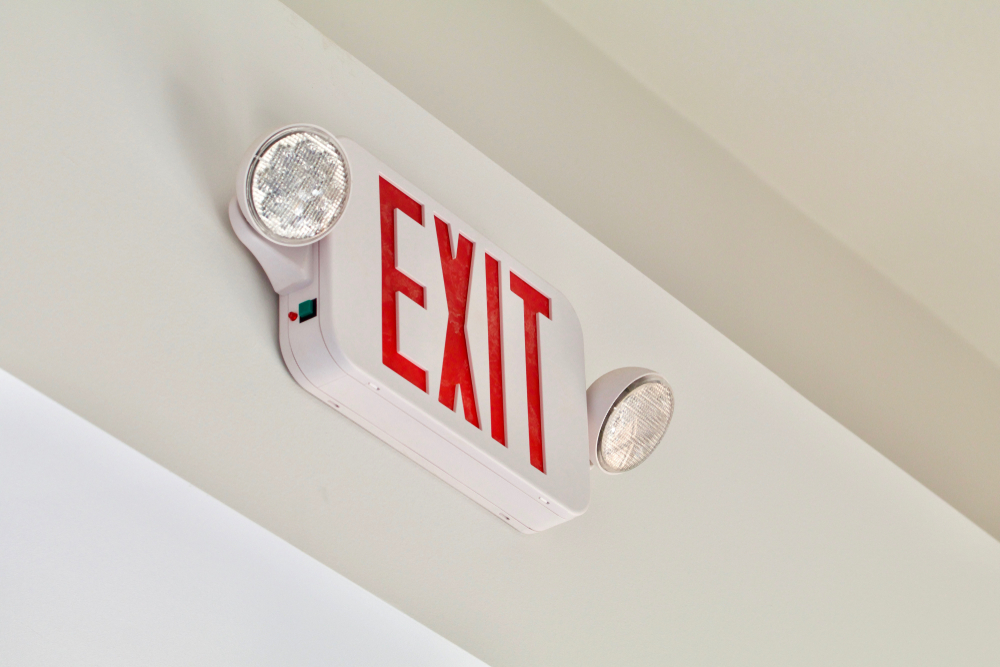How to Know When Your Emergency Lighting System Needs Repair

Emergency lighting systems are crucial for ensuring safety in both commercial and residential buildings, providing illumination during power outages or emergencies. When functioning correctly, these systems guide individuals to exits, preventing panic and reducing the risk of injury or fatalities. However, like any electrical system, emergency lighting requires regular inspection and maintenance to remain operational.
If you own or manage a building in San Diego, ensuring your emergency lighting system is up to code is not just a matter of safety—it’s a legal requirement. Regular emergency lighting inspections in San Diego are essential, but how do you know when your emergency lighting system needs repair? In this blog, we will walk through the telltale signs of faulty emergency lighting, common issues that may arise, and how to maintain your system.
Understanding the Importance of Emergency Lighting
Before diving into the signs of faulty emergency lighting, it’s essential to understand why emergency lighting systems are so critical. These systems provide lighting when standard power sources fail, allowing building occupants to navigate to safety. Emergency lights are typically used in:
- Commercial buildings
- Residential complexes
- Hospitals
- Schools
- Industrial facilities
They are strategically placed near stairways, corridors, exits, and other crucial points, where clear visibility during an emergency is paramount. Emergency lighting ensures that evacuation routes are well-lit and helps prevent accidents in case of fire, natural disasters, or other unforeseen incidents.
Why Regular Inspections Are Crucial
As per San Diego building codes and fire regulations, emergency lighting systems must be operational at all times. Regular emergency lighting inspections in San Diego ensure that your system functions as it should during emergencies and meets local and federal safety standards. Failure to maintain these systems can result in fines, legal consequences, and, more importantly, increased risk to building occupants.
One of the primary reasons for emergency lighting failure is lack of regular maintenance and testing. To avoid such situations, you should have a comprehensive emergency lighting maintenance plan in place, which includes routine inspections and timely repairs.
Signs Your Emergency Lighting System Needs Repair
The key to ensuring that your emergency lighting system works when you need it most is identifying when it requires repair. Here are some signs that your system may be faulty and in need of attention:
1. Flickering or Dimming Lights
One of the most obvious signs of faulty emergency lighting is when the lights start flickering or dimming. This can indicate several issues, such as failing bulbs, wiring problems, or issues with the power supply.
Flickering emergency lights can be particularly dangerous during an emergency, as they can create confusion and make it harder for people to follow exit routes. If you notice flickering lights during your monthly tests, it’s a sign that your emergency lighting system needs immediate repair.
2. Lights Not Activating During Power Failures
Your emergency lighting system is designed to activate automatically when the main power supply fails. If the lights don’t come on during a power outage or test, this is a significant issue that requires urgent attention.Common causes for this failure include:
- Dead batteries
- Faulty wiring
- A problem with the control panel
Regularly test your system to ensure it activates during power cuts. If the system doesn’t respond as expected, schedule a professional emergency lighting inspection in San Diego to diagnose and fix the issue.
3. Discolored or Damaged Lights
Over time, emergency lights may become discolored due to exposure to heat, dust, or moisture. If your lights are turning yellow or brown, it could indicate heat damage, which can reduce the brightness and efficiency of the lights.
Additionally, if you notice any physical damage to the lights or the fixtures, such as cracks or water damage, it could lead to failure during an emergency. Damaged emergency lights are another clear sign that emergency lighting maintenance is needed immediately.
4. Malfunctioning Exit Signs
Exit signs are an integral part of emergency lighting systems, guiding people to the nearest exit in the event of an emergency. If exit signs are not properly illuminated, broken, or flickering, they may not provide adequate visibility during a crisis.
Exit signs may fail due to:
- Burned-out bulbs
- Electrical problems
- Faulty connections
Since these signs are critical for safe evacuation, malfunctioning exit signs should be addressed promptly. Regularly test your exit signs to ensure they are working correctly and get them repaired if any issues arise.
5. Battery or Backup Power Issues
Emergency lighting systems rely on backup batteries to function during power outages. Over time, these batteries degrade and lose their ability to hold a charge. If your batteries are old, they may fail when you need them most.Signs that your system’s batteries need replacement include:
- The lights not lasting through the entire test cycle
- The system indicating a battery fault
- Lights flickering or dimming before they turn off
As part of your emergency lighting maintenance plan, regularly test the backup batteries and replace them as needed to ensure the system remains fully operational during an emergency.
6. Inconsistent Lighting Coverage
Your emergency lighting system is designed to provide consistent illumination across key areas of your building, such as corridors, stairwells, and exits. If you notice that some areas are not as well-lit as others or if certain lights don’t seem to provide enough illumination, it may indicate a problem with your system’s design or functionality.
Inconsistent lighting could be the result of:
- Burned-out bulbs
- Malfunctioning lights
- Incorrect placement of lighting fixtures
Addressing this issue promptly can help ensure that your building’s evacuation routes are clearly visible during emergencies.
7. Unusual Noises Coming from the System
If you hear buzzing, humming, or crackling sounds coming from your emergency lighting fixtures or control panel, it’s a sign of a deeper electrical issue. Electrical faults can pose significant safety hazards and may result in system failure when you need it most.
These sounds could indicate loose connections, faulty wiring, or malfunctioning components. If you hear any unusual noises, contact a professional to inspect the system and perform the necessary repairs.
Steps for Effective Emergency Lighting Maintenance
Identifying signs of faulty emergency lighting is just the first step. To ensure that your system remains operational, you need to implement a robust emergency lighting maintenance plan. Here are some essential steps:
1. Schedule Regular Inspections
As a building owner or manager in San Diego, regular inspections of your emergency lighting system are vital to staying compliant with local regulations. Inspections should be scheduled at least once a year, but monthly or quarterly tests may be required depending on the building’s size and occupancy type.
2. Test Emergency Lighting Systems
Testing is critical to ensuring that your system activates correctly during an emergency. Perform monthly tests by simulating a power outage to verify that all lights and exit signs illuminate and function properly. Keep records of all tests and repairs performed.
3. Replace Batteries as Needed
Backup batteries have a limited lifespan and need to be replaced regularly. Check the manufacturer’s recommendations for your system and replace batteries that no longer hold a charge or fail during tests.
4. Repair or Replace Faulty Components
If you notice any signs of malfunction, such as flickering lights, burned-out bulbs, or faulty wiring, address the issue immediately. Delaying repairs can lead to system failure during an emergency, putting occupants at risk.
5. Keep Emergency Exits Clear
Ensure that emergency exits and pathways are free from obstacles at all times. Even a fully functional emergency lighting system won’t help if people can’t access exits due to blockages.
Conclusion
Your emergency lighting system plays a critical role in ensuring the safety of building occupants during an emergency. By understanding the signs of faulty emergency lighting and staying proactive with emergency lighting maintenance, you can ensure that your system functions properly when it matters most.
If you’re in San Diego and suspect your system may need repair, scheduling an emergency lighting inspection in San Diego is essential for compliance with local regulations and maintaining the safety of everyone in your building. Don’t wait for a crisis to find out your system isn’t working—regular inspections, maintenance, and repairs can save lives.
Need a Lighting Company in California?
Since 2003, we here at Utility Incentive Corp. have been the premier provider of energy efficient electrical services in San Diego and the surrounding areas. We are a privately owned and operated business with 20 years of experience. Our friendly and professional staff work in conjunction with other businesses to provide them with better solutions at little to no cost to property owners.
We focus primarily on relamping and retrofitting T12 lamps and ballasts to “Energy Star” T-8 lamps and “flicker free” ballasts. Our other services include a free initial consultation, energy audit, and utility application. Give us a call today to see why we have installed and replaced over 175,000 fixtures across California!
